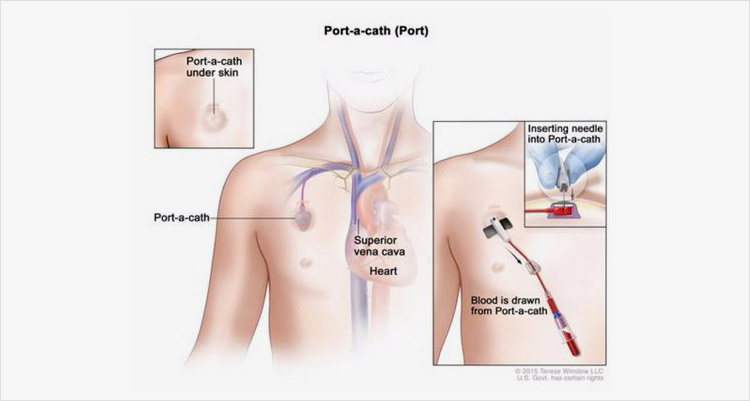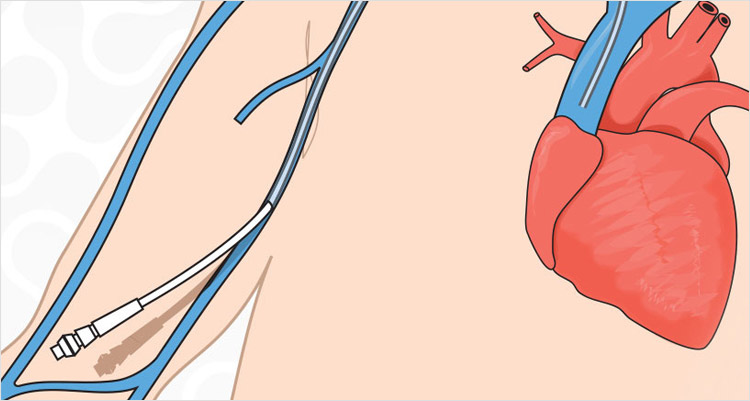Vascular Access
Port A Cath
A device used to draw blood and give treatments, including intravenous fluids, drugs, or blood transfusions. The port is placed under the skin, usually in the chest. It is attached to a catheter (a thin, flexible tube) that is guided (threaded) into a large vein above the right side of the heart called the superior vena cava. A port-a-cath may stay in place for many weeks or months. A needle is inserted through the skin into the port to draw blood or give fluids. It is also called a port. This avoids the need to have repeated intravenous lines placed to allow for blood tests, infusions, TPN (Parenteral Nutrition), or chemotherapy.

They are inserted either under general or local anaesthetic with X-ray guidance For medical practitioners
providing treatment, the port-a-cath makes certain tasks quicker and easier; from the patient’s perspective, this device means that treatment (i.e. injections and blood tests) produce less discomfort in comparison to
the typical ‘needle stick’.
A Port removal is a much simpler procedure, done under local anaesthesia, whenever it is no longer needed.










